Violet Blue-Eyed Mary (Collinsia violacea) of the Plantain (Plantaginaceae) family, formerly of the Figwort (Scrophulariaceae) family, is an annual forb with attractive bi-colored flowers. The genus name honors Zaccheus Collins (1764–1831), a Philadelphia botanist. The specific epithet is Latin for “purple.” The species has a restricted range in the central U.S. comprising northeast Texas, eastern Oklahoma, southeast Kansas, southern Missouri, and Arkansas. In Arkansas, plants occur primarily in the Interior Highlands in the northwestern half of the state. Habitats are mostly sunny with sandy to rocky soils, such as prairies, open woods, glades, and roadsides. It is also called Violet Collinsia and Narrow-Leaf Collinsia.
Plants are winter annuals, germinating over winter, flowering in early spring, and producing fruit soon after. They die by the end of May. Growing to 1 foot tall with long fibrous roots, robust plants have an erect main stem with several opposite leaf pairs in their lower portion and 1-4 sets of whorled leaves above. Single flowers, borne on long, ascending, rather wispy pedicels, develop from the axils of the upper leaves. Stems, branches, and pedicels are typically reddish with dense, short, white pubescence. Being herbaceous, dead stems disappear over summer. In favorable habitats, large seeded colonies may develop.

The somewhat succulent, simple leaves vary from ovate-oblong to broad-lanceolate below, becoming narrower above. Lower leaves are apically blunt and rounded at the base; they grow to 1½+ inches long and ½+ inch wide, with smooth to shallowly serrate margins. Lowermost leaves have short petioles; more distal leaves become sessile to clasping. Other than the midvein, venation is obscure. The dull upper leaf surface is densely short pubescent, the lower surface slightly shiny and glabrous.
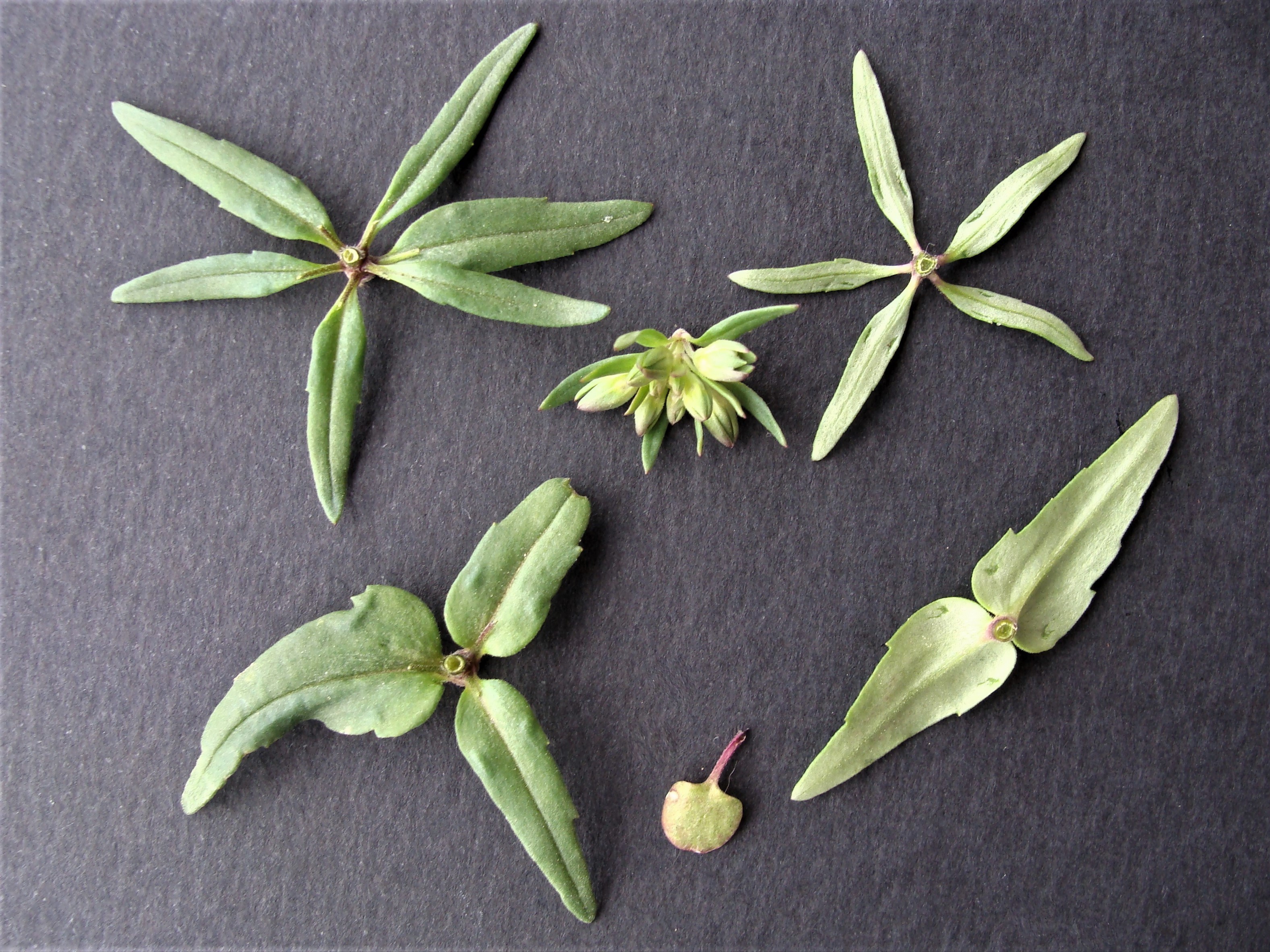
The inflorescence of a robust plant consists of single axillary flowers from both the opposite leaves of the lower and mid-stem and the 1-4 sets of whorled leaves above. Each whorl may have 3-6 flowers. Ascending, rather wispy, reddish pedicels reach 1+ inch long. Flowers bloom sequentially from lowermost to uppermost, with all flowers in a whorl blooming about the same time. The blooming period extends for about 3 weeks in late March into April. Individual flowers, depending on weather conditions, may remain in bloom for six or more days.
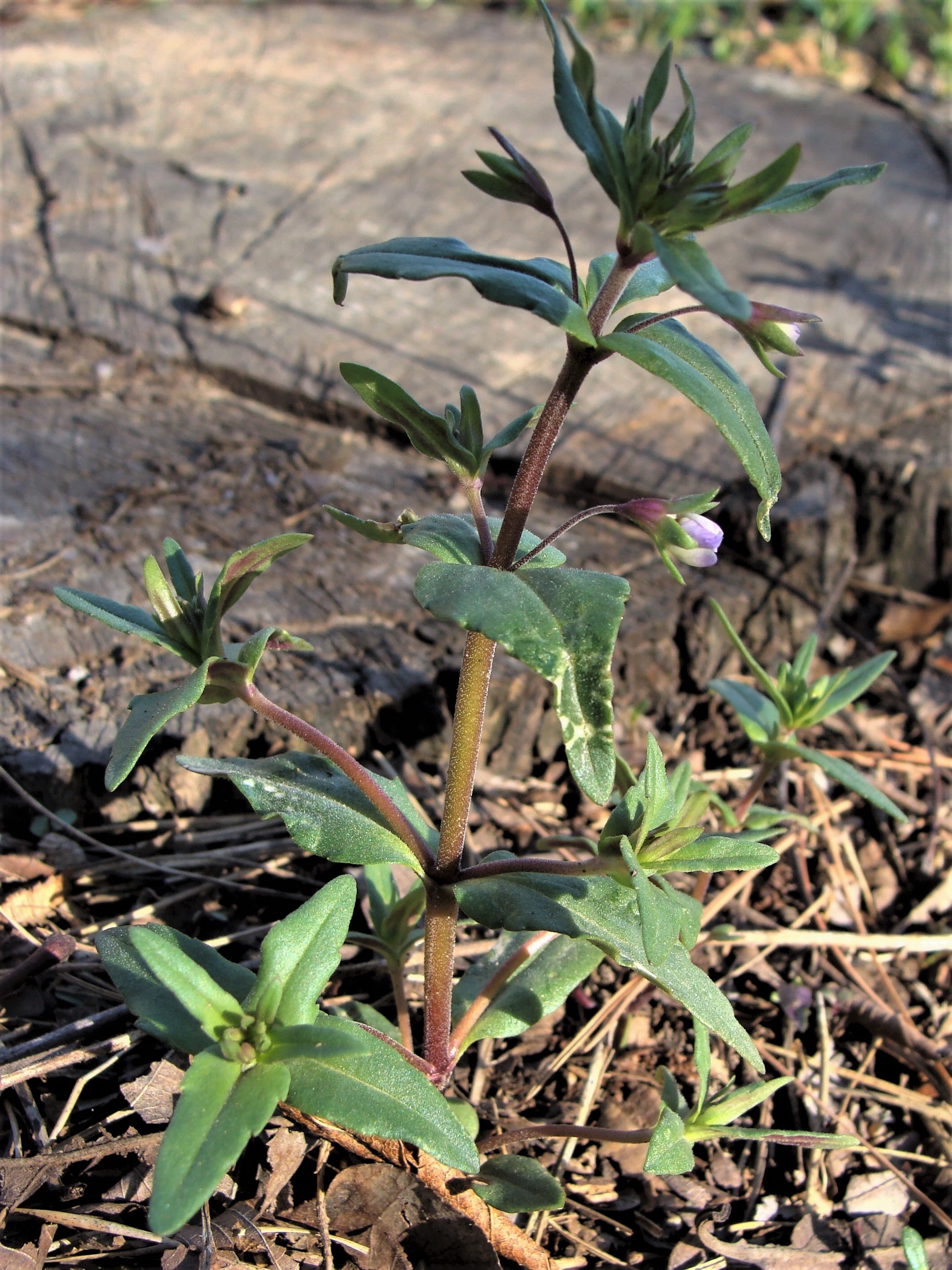
Flowers have a calyx with 5 green, triangular teeth borne on a strikingly violet tube. The corolla, about ½ inch wide and ⅝ inch long, is tubular, with an upper lip of two notched, reflexed white lobes and a lower lip of three violet lobes, of which the outer two are notched and the smaller central lobe is folded and keel-like. The upper lip, at the throat, has a pair of yellow to orange “humps.” The outer lobes of the lower lip have a white band extending from the notch into the throat. Four stamens and a style are hidden within the central keel-like lobe of the lower lip. Stamens, pubescent along their lower potions, have white filaments and brown anthers that bear bright yellow pollen.

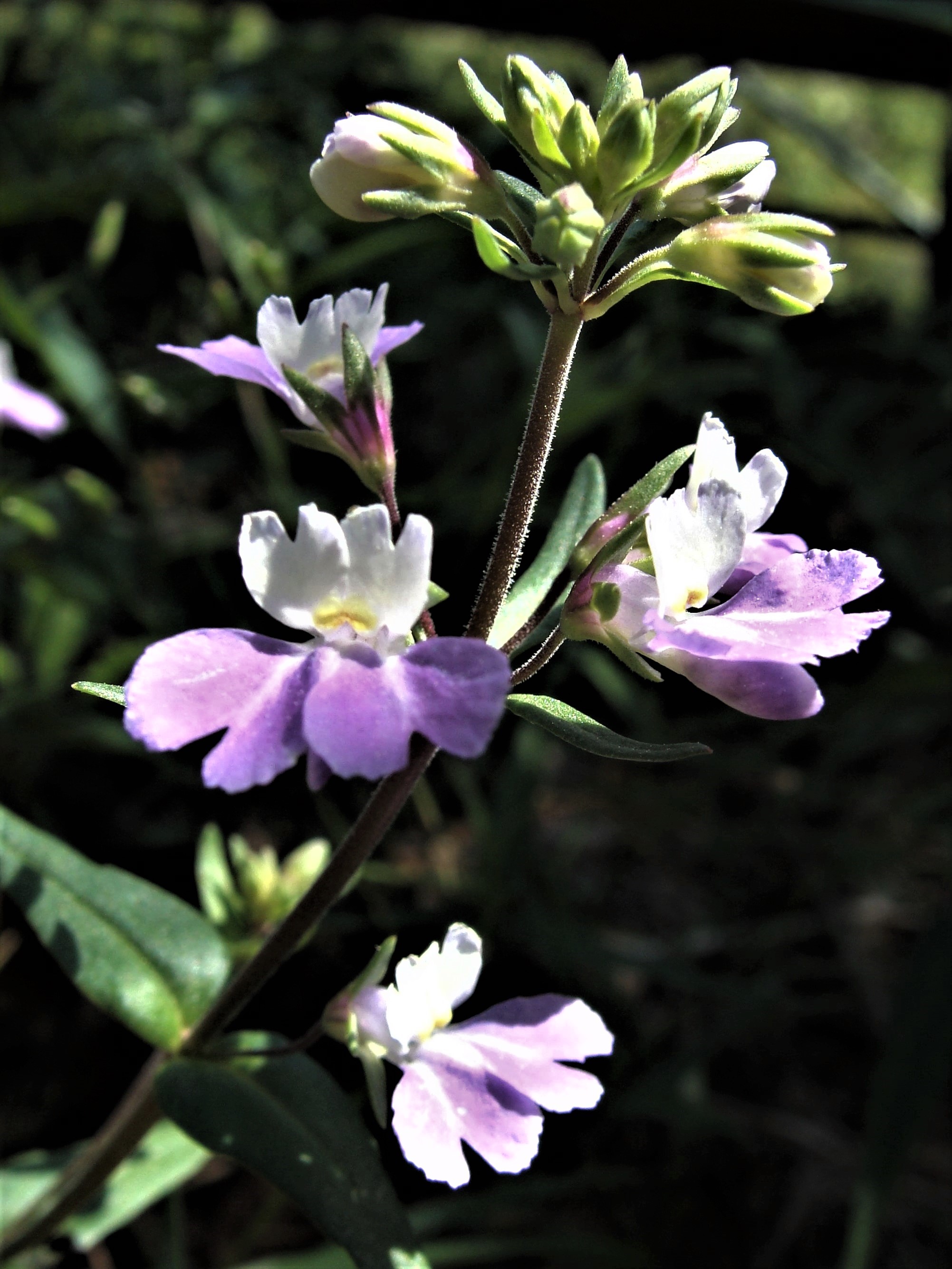



Ovaries of fertilized flowers develop into ovoid to spherical capsules. When dry, the light-tan capsules split along partitions to release dark brown, finely wrinkled, oblong to ovoid seeds about 1/16 inch long. Calyxes, with reflexed teeth extending beyond the capsules, are persistent. Plants propagate by seed only.
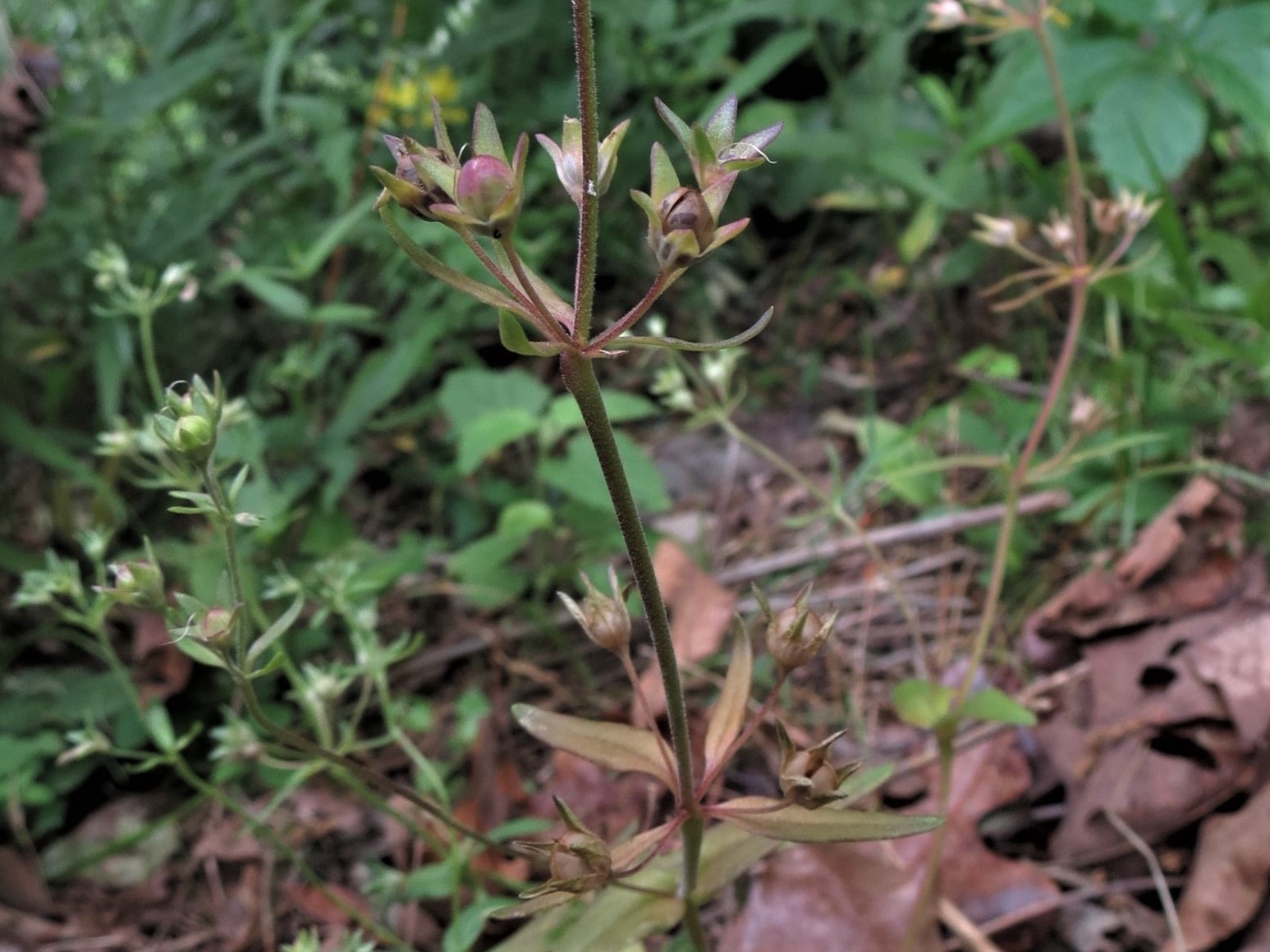
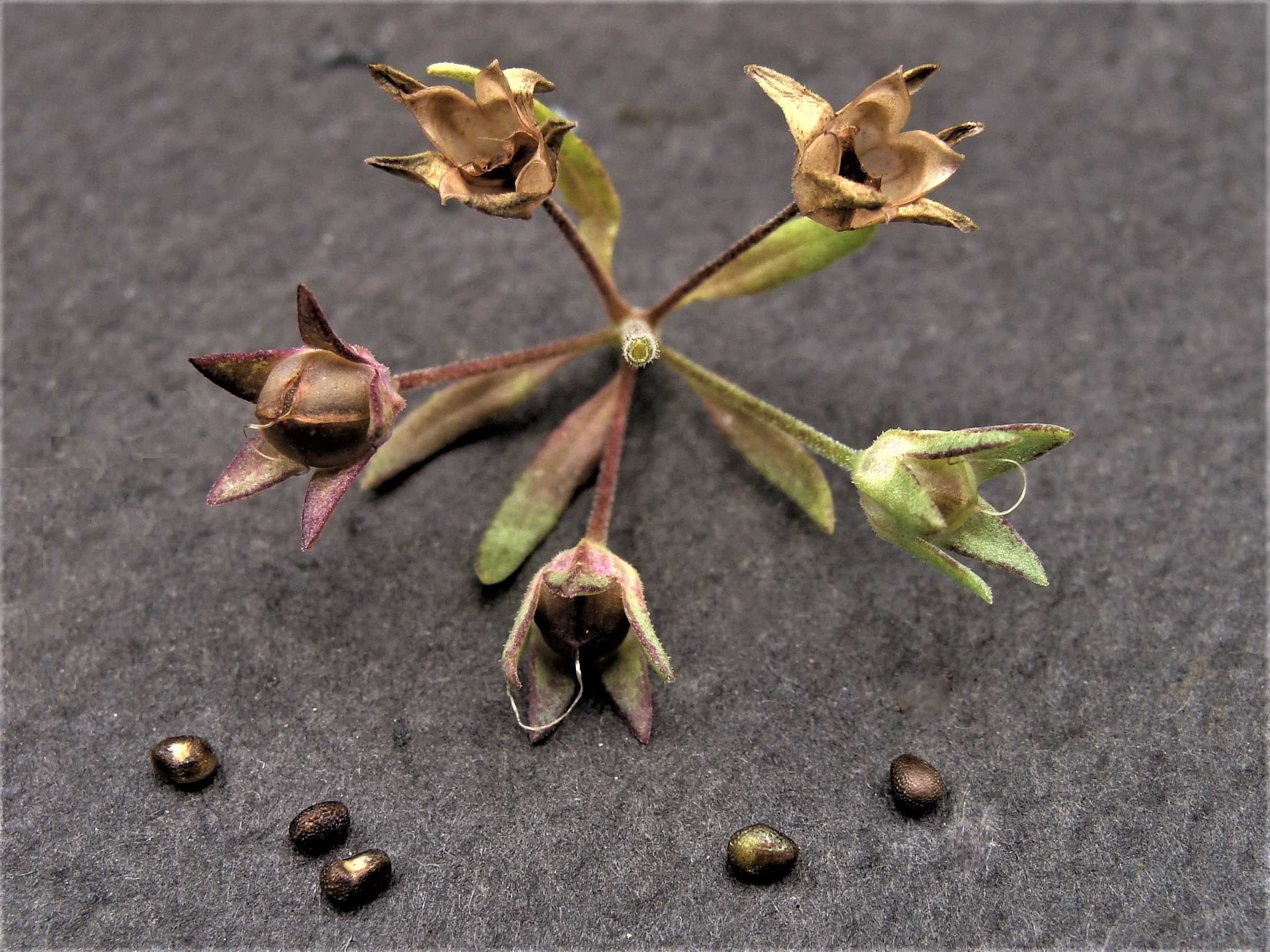
Violet Blue-Eyed Mary is a small winter annual with elegant structure and showy, distinctive, bi-colored flowers. To establish in a sunny garden, seeds would need to be spread by late fall in a site where soil would not be disturbed into late spring. Plants do not seem to spread aggressively, however fairly large seeded colonies may form over time. A naturalistic garden or a restored prairie may be an ideal setting for a colony, but plants would be lost in tall grass.
An additional species of the genus occurs in Arkansas: Blue-Eyed Mary (Collinsia verna). Violet Blue Eyed-Mary can be distinguished from Blue-Eyed Mary by: 1) preference for sunny drier sites, 2) reddish stems, branches, and pedicels, 3) violet (not blue) lower lip, 4) distinct v-notched corolla lobes, and 5) upper lips that are significantly smaller than lower lips. Blue-Eyed Mary is rare in Arkansas and known from only a handful of counties in the Ozark Highlands.
Article and photographs by ANPS member Sid Vogelpohl

